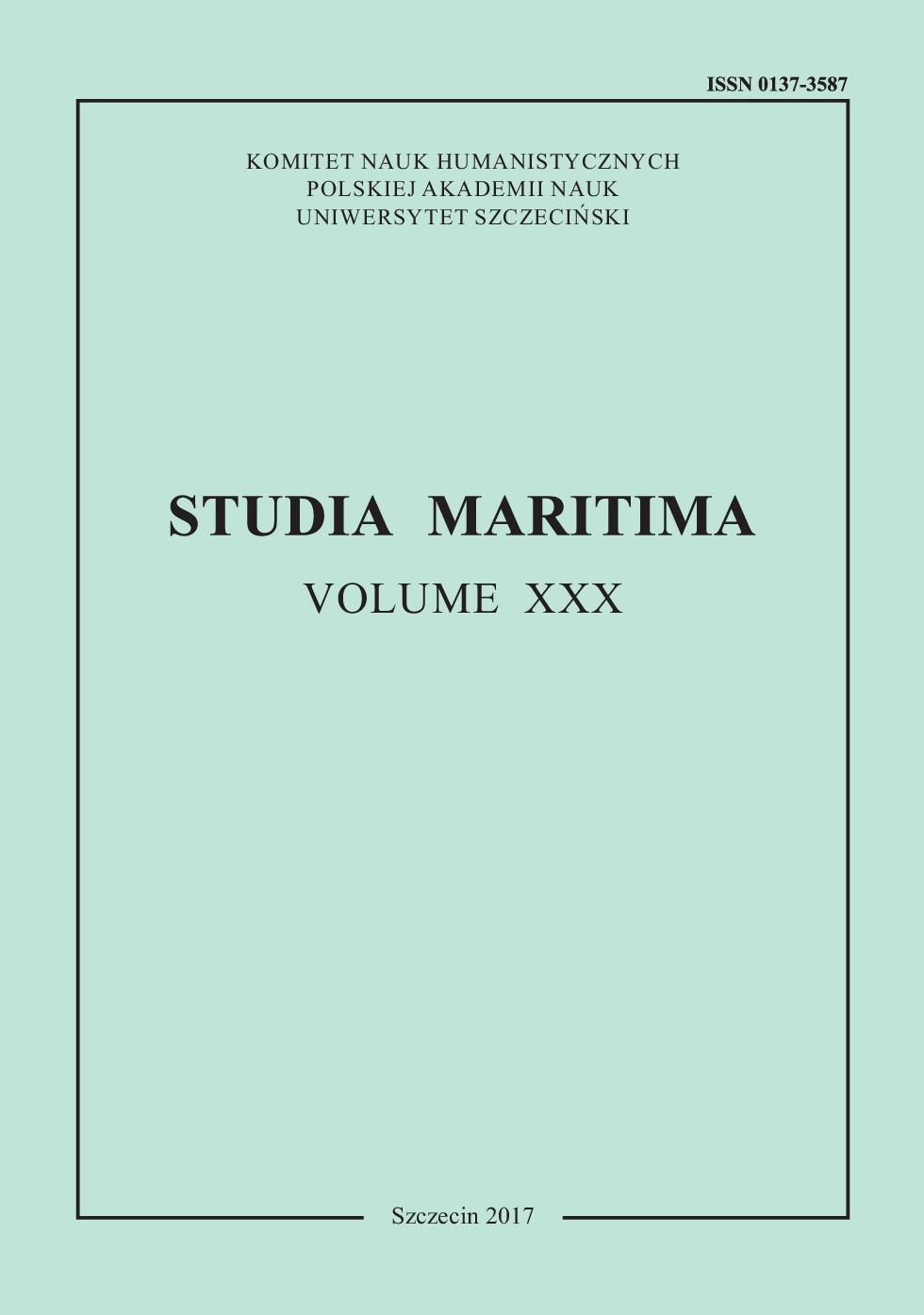Zarys dziejów portu kołobrzeskiego w XVI–XVIII wieku
Introduction to the History of Kołobrzeg’s Harbour From 16th to 18th Century
Author(s): Radosław GazińskiSubject(s): History
Published by: Wydawnictwo Naukowe Uniwersytetu Szczecińskiego
Keywords: Pomeranian history; Kołobrzeg; harbour; harbour administration
Summary/Abstract: Kołobrzeg’s harbour, located by the mouth of Parsęta River, started its functioning at the turn of 13th and 14th century. It was directly connected with wide-spreading of cogs in hanseatic marine navigation. Cogs, because of their submersion, were not being able to easily reach the founded town. Most probably in 14th century on the east riverbank the wharf was built. At the same time the construction of short (about 50 meters long) breakwaters was started. Breakwaters were necessary to buckler the river mouth. Simultaneously customs house, where village head of Ujście officiated, was located in the harbour. The village head was obligated to look after the harbour. Over the years, despite great damages caused by very strong cyclic storms (1497, 1645, 1649, 1691, 1693, 1730, and 1731) and the devastations caused by armed conflicts, especially the Thirty Years’ War and the Seven Years’ War, the Kołobrzeg’s harbour gradually expanded. Breakwaters with the strong wooden caisson construction were led over 100 m into the sea. The wharf on the east bank of the Parsęta River was extended to about 250 m. The wharf was originally built with wooden caissons (15th – 17th century) and then it was changed to palisade construction (18th c.). The harbour infrastructure of the time also included: a customs house, a harbour crane (confirmed in 16th c.), storage yards, a salt warehouse and, since 18th century, stowage (Packhof). From 1666, on the east riverside in the fortifications erected during Thirty Years’ War, a lighthouse started its function. The main problem of the harbour was maintaining the harbour depth (about 2,5 m) and the depth of the harbour entrance (it was varied and depending on the current natural conditions). The straightforward methods of dredging the harbour waters of the time did not cause lasting and satisfactory results. In this situation since 16th century the larger vessels were forced to carry indirect transhipments on the roadstead. The harbour was at first managed by the harbour head. However in the 14th century “harbour masters” who charged fees from arriving vessels to the mouth of Parsęta River, were introduced. Since the second half of 15th century there have been harbour administrators (started from one, then two, and finally four), who, on behalf of the council, rotary managed the harbour. Over time (in the second half of 16th century) the function of “harbour masters” disappeared, and harbour administrators managed the entire harbour, including charging harbour fees (until the end of 17th century) and supervising repairs and function of the harbour. Harbour administrator on duty had authority over the village head of Ujście, harbour carpenter with assistants, pilots who led in vessels into the harbour and harbour workers. In the 18th century all the fees from imported and exported goods and arriving vessels were charged by stowage officials (Packhof). There was also harbour office there.
Journal: Studia Maritima
- Issue Year: 30/2017
- Issue No: 1
- Page Range: 23-39
- Page Count: 17
- Language: Polish

